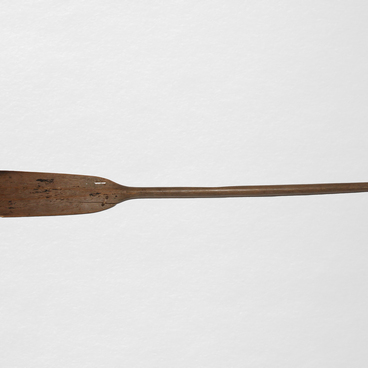The Khanty, Mansi and many other peoples of the North attached particular importance to the storage of sewing needles. This small item was one of the most important in the household, as it could be used to make warm, durable clothing and survive the winter cold.
The needle was also treated with care, since it symbolized womanhood. For example, the Mansi, when a girl was born in the family, stuck a needle into a rag and took it to a cult place. And the Tromyogan Khanty, after the birth of the girl, brought small pincushions to the sanctuary.
The Tromyogan Khanty got their name from the right tributary of the Ob — the Tromyogan River, which flows through the territory of the Surgut region of the Khanty-Mansi Autonomous District.
Sewing needles were stored in special homemade pincushions. According to Khanty beliefs, the pincushion emphasized the sacredness of the female world, since it was inhabited by a female spirit.
The girl could receive a pincushion from her mother, grandmother or godmother. If a young girl made the item by herself, then she often copied the beaded embroidery, combination of colors and pattern from her mother. When a young girl got married or ran away from her home to her groom without permission, she took her bag for needlework and pincushion with her. If these items remained at home, the parents realized that something had happened to their daughter and began to look for her.
The pincushion was also used in the wedding ceremony. For example, when the eastern Khanty took the bride around the groom’s house, they put the pincushion on the floor. A married Khanty woman always had her needlework by her side, thus maintaining the sacred connection with womanhood. She kept the pincushion with needles in a special hand-made bag called “tutchan” or in a special ornamented box made of fir bark.
The pincushion was also part of the Khanty burial rituals. Together with other personal belongings and a hand-made bag, it followed its owner to the other world. A pincushion “died” when a hole was cut in it.
The traditional Khanty pincushion from the Muravlenko museum’s collection is made of multi-colored cloth. An unknown craftswoman embroidered the soft part with a national pattern, placed a sacred image of a wood grouse in the center of the inner square, and trimmed the pincushion with soft mink fur along the edges.
The needle was also treated with care, since it symbolized womanhood. For example, the Mansi, when a girl was born in the family, stuck a needle into a rag and took it to a cult place. And the Tromyogan Khanty, after the birth of the girl, brought small pincushions to the sanctuary.
The Tromyogan Khanty got their name from the right tributary of the Ob — the Tromyogan River, which flows through the territory of the Surgut region of the Khanty-Mansi Autonomous District.
Sewing needles were stored in special homemade pincushions. According to Khanty beliefs, the pincushion emphasized the sacredness of the female world, since it was inhabited by a female spirit.
The girl could receive a pincushion from her mother, grandmother or godmother. If a young girl made the item by herself, then she often copied the beaded embroidery, combination of colors and pattern from her mother. When a young girl got married or ran away from her home to her groom without permission, she took her bag for needlework and pincushion with her. If these items remained at home, the parents realized that something had happened to their daughter and began to look for her.
The pincushion was also used in the wedding ceremony. For example, when the eastern Khanty took the bride around the groom’s house, they put the pincushion on the floor. A married Khanty woman always had her needlework by her side, thus maintaining the sacred connection with womanhood. She kept the pincushion with needles in a special hand-made bag called “tutchan” or in a special ornamented box made of fir bark.
The pincushion was also part of the Khanty burial rituals. Together with other personal belongings and a hand-made bag, it followed its owner to the other world. A pincushion “died” when a hole was cut in it.
The traditional Khanty pincushion from the Muravlenko museum’s collection is made of multi-colored cloth. An unknown craftswoman embroidered the soft part with a national pattern, placed a sacred image of a wood grouse in the center of the inner square, and trimmed the pincushion with soft mink fur along the edges.



